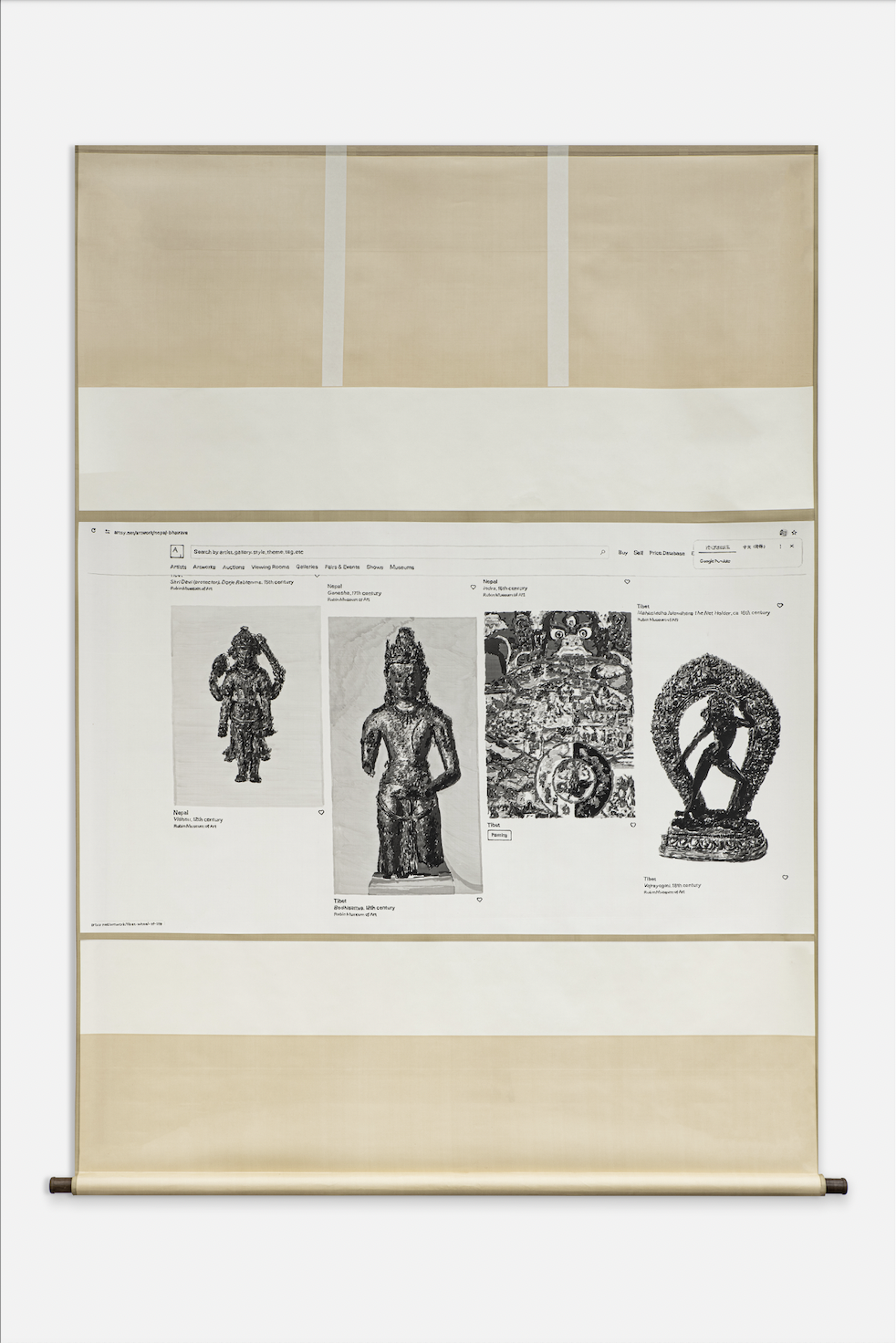Xu Zhen
Interface — Four Buddha Statues
Framing size : 260 × 180 cm
Materials : Hanging Scroll, ink on silk
Year : 2024
“Interface” series depicts the webpage interface showcasing Tibetan artifacts from the Metropolitan Museum of Art’s website. The artist meticulously uses ink painting to portray details such as the navigation bar, labels, text descriptions, and images of the artifacts, emphasizing the standardization and homogeneity of the digital world. One is left to reflect on the regulation and control behind cultural exchanges.
(From left to right)
The statue of Vishnu, made of gilt copper alloy, originates from Nepal and dates back to the 12th century. It is currently housed at the Rubin Museum of Art.
The Bodhisattva piece comes from Tibet. This 12th-century gilt copper alloy bodhisattva statue is also housed at the Rubin Museum of Art. Its elegance and beauty are evident, with translucent garments outlining the shape of its legs and a sacred thread draped over the left shoulder, following the contour of its chest. The statue once wore a trefoil crown, now damaged. The grooves on the crown, which originally held precious stones like rubies, emeralds, and crystals, are still visible, as are the traces of gem settings on the earrings, necklace, and armlets.
Wheel of Life originates from Tibet and is painted on cloth, currently housed at the Rubin Museum of Art. The “Wheel of Life” is a visualization of the human condition in Tibetan Buddhism, depicting the endless cycle of birth, death, and rebirth—samsara—and vividly reminding viewers of the law of karma.
The Vajrayogini statue comes from Tibet and was created in the 18th century. Made of brass and gilt copper alloy, Vajrayogini is one of the central deities in the Sakya Buddhist tradition. She symbolizes the state of complete enlightenment achieved through tantric practice, of which she is a central aspect. This piece is also part of the Rubin Museum of Art’s collection.
